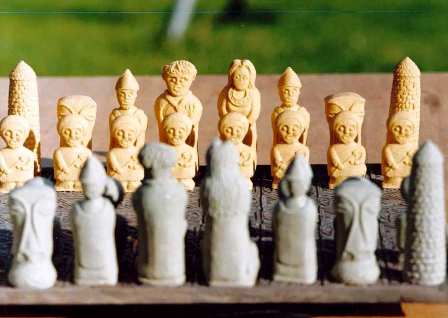The term Celtic knot work covers all Celtic designs that use an overlapping line to create a balanced symmetrical design.
Knot work designs can vary in design from circular to square.
The circular or round designs are thought to have a proctective or magical property.
Triangular knot work designs are quite interesting in their association with Celtic folklore.
The early Celts believed in reincarnation and the number three was a magical number to them.
It is supposed that the number three was the sign for reincarnation. Birth , life and death.
(Even todayin Ireland people still say that everything comes in threes.)
The triangular knot work was supposed to symbolise this never ending cycle.
As with all things Celtic the early Christian Church in Ireland and the wider Celtic world, used the exsisting symbols of the older Pagan religions. They reused or modified their meanings.
A good example of this borrowing of exsisting symbols is the three sided knot work design.
This Triangular knot work design became known as the Trinity knot, symbolising the Holy Trinity, Father, Son and the Holy spirit.
No one knows the exact meaning of these art forms, all explainations are at best educated guesses.
Celtic knotwork designs have a thought provoking effect when studied.
Your eye follows the line of the design, in and out, under and over, perhaps this design is a mandala used to focus meditation and thought on a specific subject.
Always after gazing upon a knot work design, the mind becomes more balanced and focused, leaving it also a lot calmer.
The more that you explore knot work designs the more apparent it becomes that there is some form of special or magical property within, or maybe it is a portal for the beholder to link to their Celtic past or heritage.
Celtic knot work designs are constantly developing and changing like a language or music.
The use of these symetrical designs embellishes and decorates many fine crafted objects found throughout the Celtic world.
This tradition has enjoyed a major revival in the recent past, perhaps its a calling for all the Celtic clans to unite once more and celebrate their rich history
Monday, 25 May 2009
Subscribe to:
Post Comments (Atom)




No comments:
Post a Comment